Madonna with the long neck, by Francesco Mazzola known as Parmigianino (1534-1540)
Madonna with the long neck, by Francesco Mazzola known as Parmigianino (1534-1540)
Couldn't load pickup availability
SKU:UN59DCV2LAHGF
WHY BUY
- Magnificent and real colors
- It makes any room elegant
- Perfect for a prestigious gift
CHARACTERISTICS
Print on handmade paper from Amalfi
Sheet size: 30 x 42 cm
Material: work printed on very fine handmade Amalfi paper with fringed edges
Print on handmade Amalfi paper with frame
Sheet size: 30 x 42 cm
With frame: 32 x 44 cm
Material: work printed on very fine handmade Amalfi paper with fringed edges, handmade beech wood frame
Print on pictorial canvas
Measurement: 80 x 60 cm
Material: work printed on very fine grain pictorial canvas
Frame: Light brown beech wood and handmade wood pulp
DO YOU WANT INFORMATION ON THE PRODUCT? WHATSAPP CHAT WITH A CONSULTANT
The work
Francesco Mazzola, known as Parmigianino, was an early artist trained in Parma under the influence of Correggio. He studied the works of Michelangelo and Raphael in Rome, developing an elegant and refined mannerist style. The "Madonna with the long neck" was commissioned in 1534 by Elena Baiardi Tagliaferri for the church of Santa Maria dei Servi in Parma. Although the artist had promised to complete it in five months, at his death in 1540 the work was still unfinished. However, it was exhibited in 1542, with an inscription justifying its incompleteness.
The Virgin, represented with elongated shapes and an exaggeratedly long neck, contemplates Jesus sleeping on her lap, prefiguring the Passion of Christ. Baby Jesus is depicted at an unusually advanced age, similar to that of a six-year-old, but with the baldness typical of newborns. Despite the sacred theme, Parmigianino introduces sensual elements in the elegant figures and tight drapery of the Virgin.
The painting entered the Medici collections in 1698. A pink curtain forms the backdrop to the seated Madonna, whose long neck gives the work its name. The right side of the painting, characterized by an empty area, features a row of tall columns without capitals and an emaciated figure that could be a prophet or Saint Jerome. Next to it there is a foot without a body, perhaps belonging to Saint Francis, indicating the incompleteness of the work.
The iconographic choice is precise: the column symbolizes purity, as indicated in the Song of Songs, and the amphora, symbol of the Virgin, prefigures the Crucifixion. The painting, sophisticated in content and formal, remains a perfect example of mannerist art.
How reproductions are made
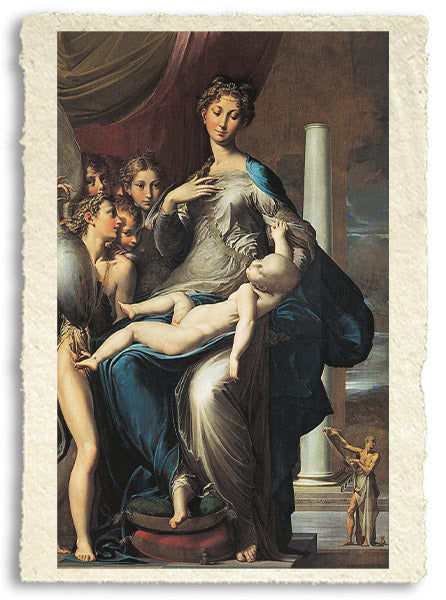
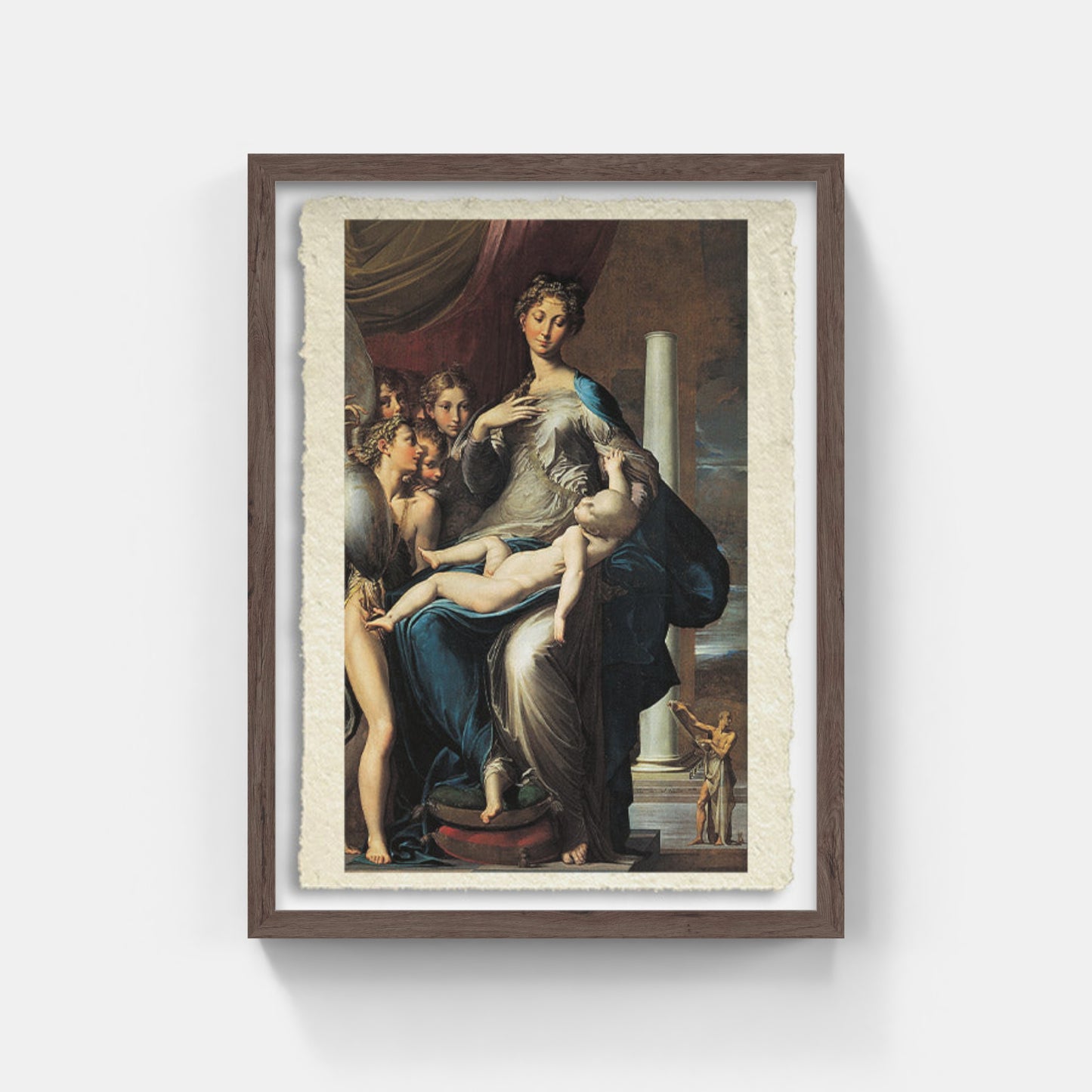
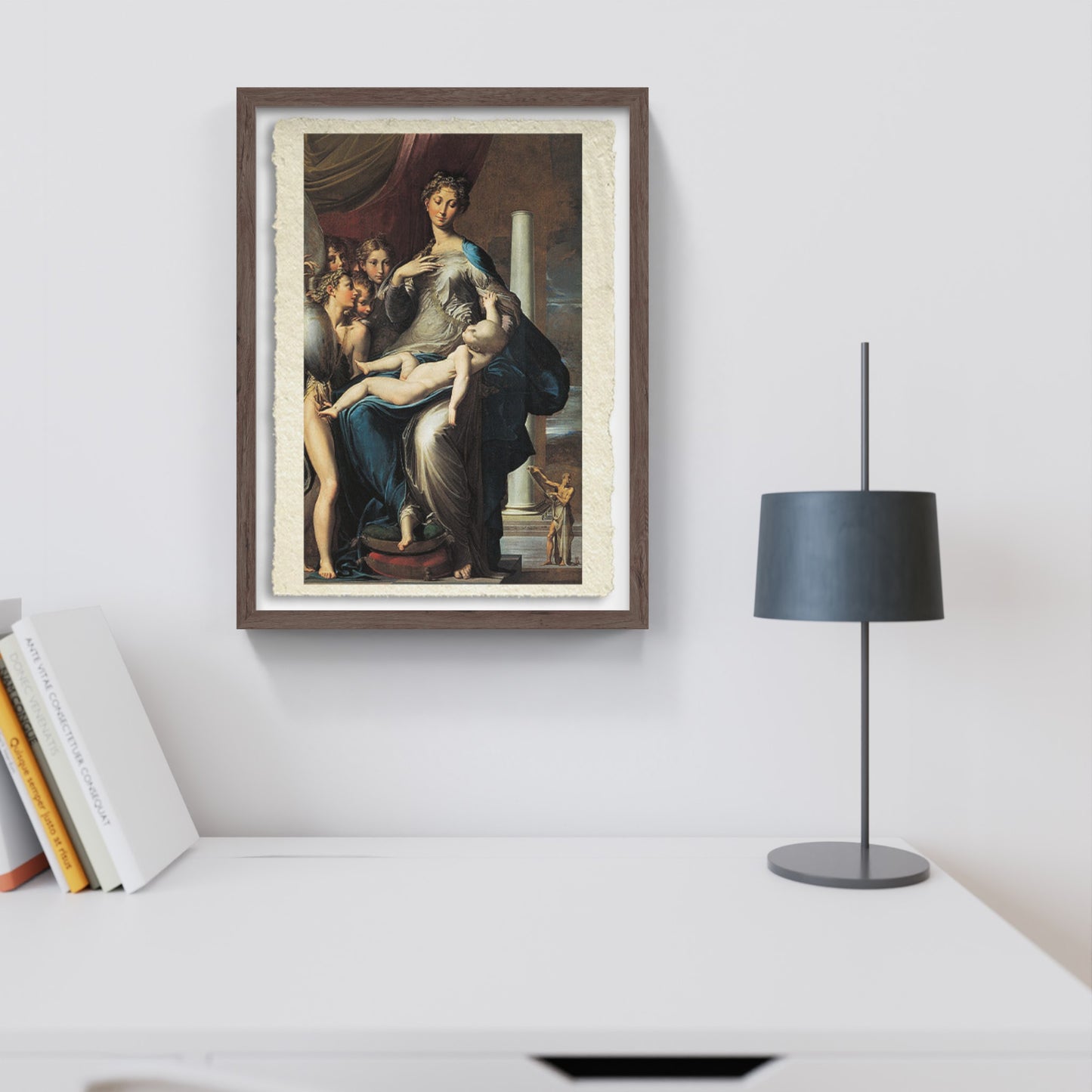
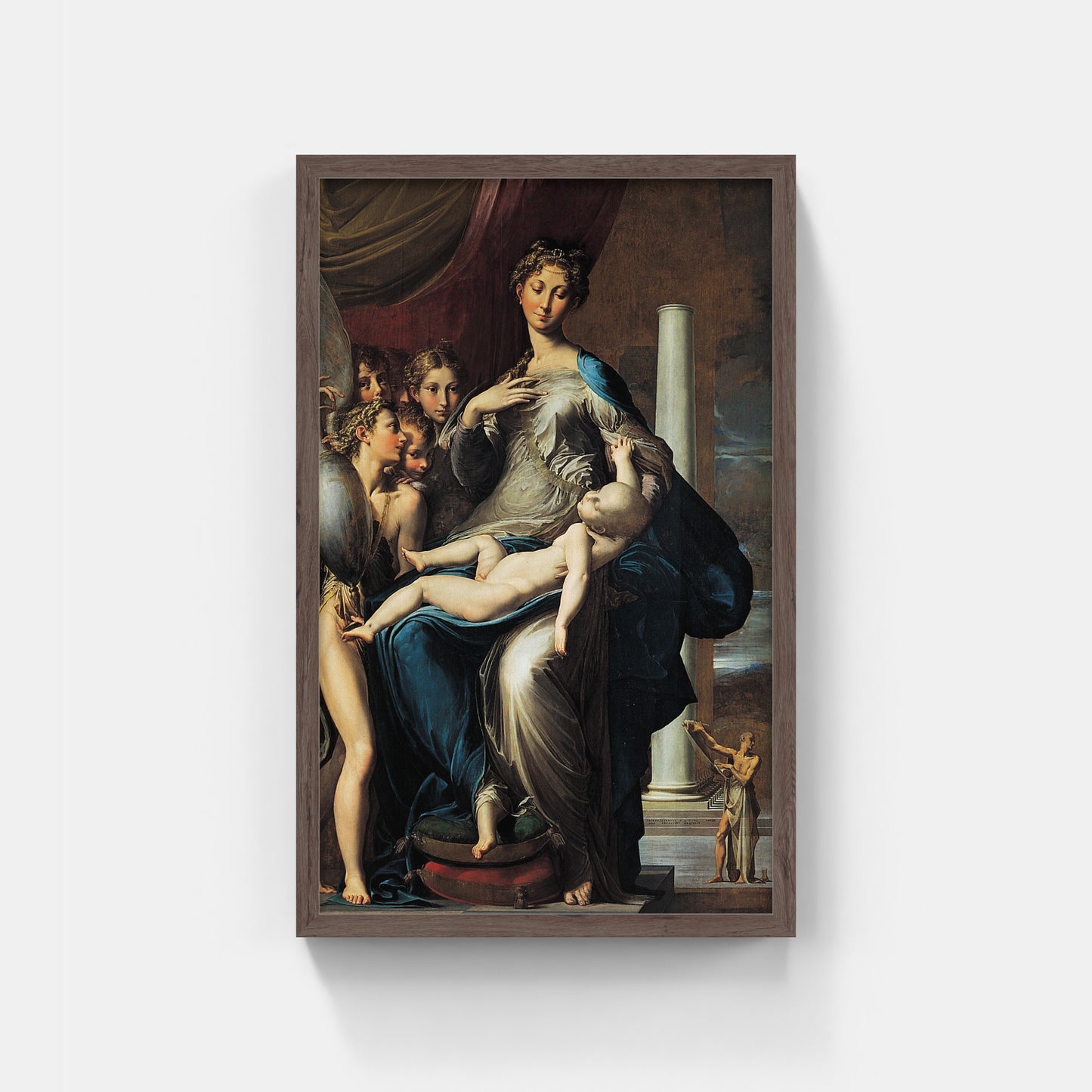
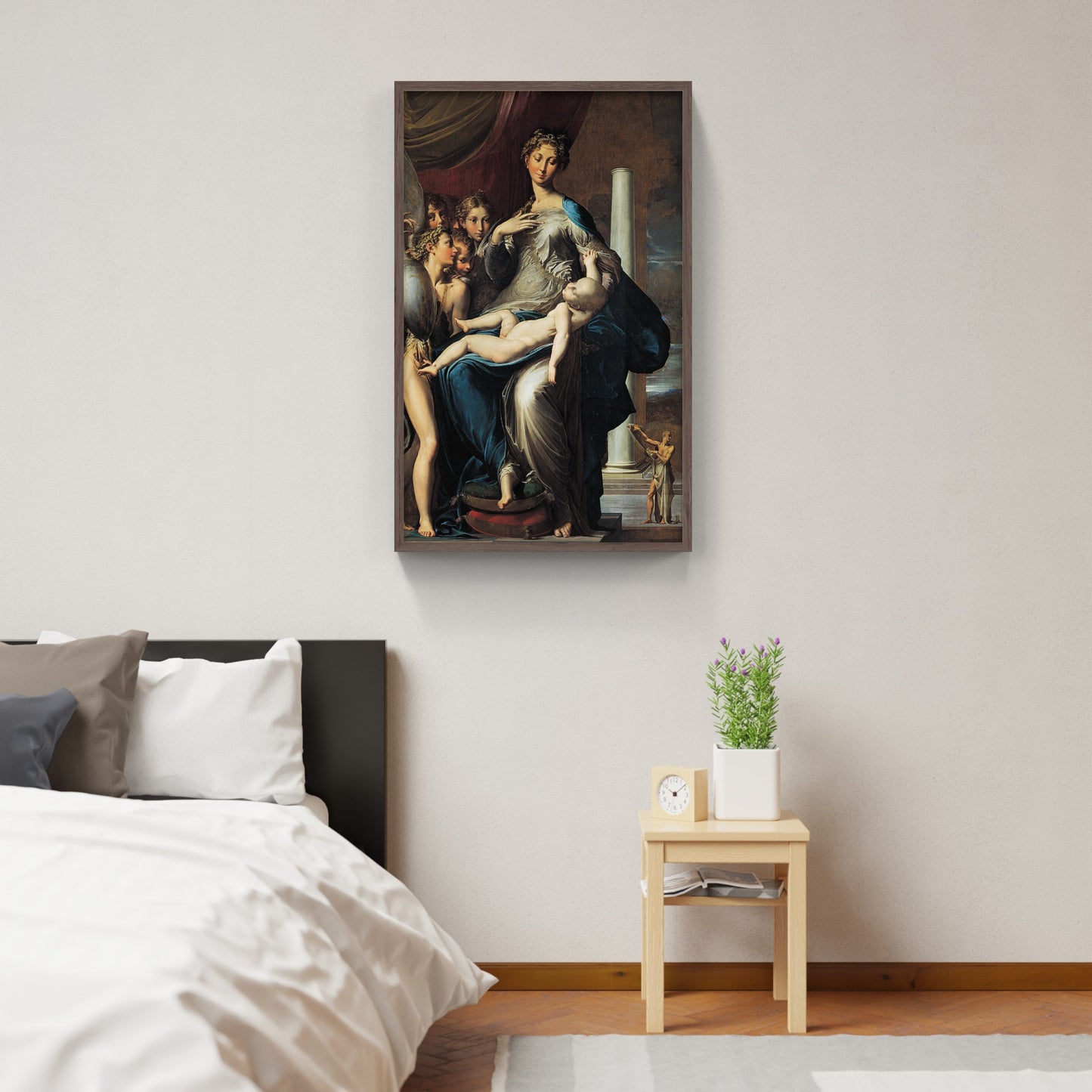
Scopri i pregiati materiali di Trizio Editore
Carta di Amalfi fatta a mano, cornice in legno di faggio e vetro museale. Guarda i particolari dei prodotti che renderanno la tua casa più elegante e preziosa.



